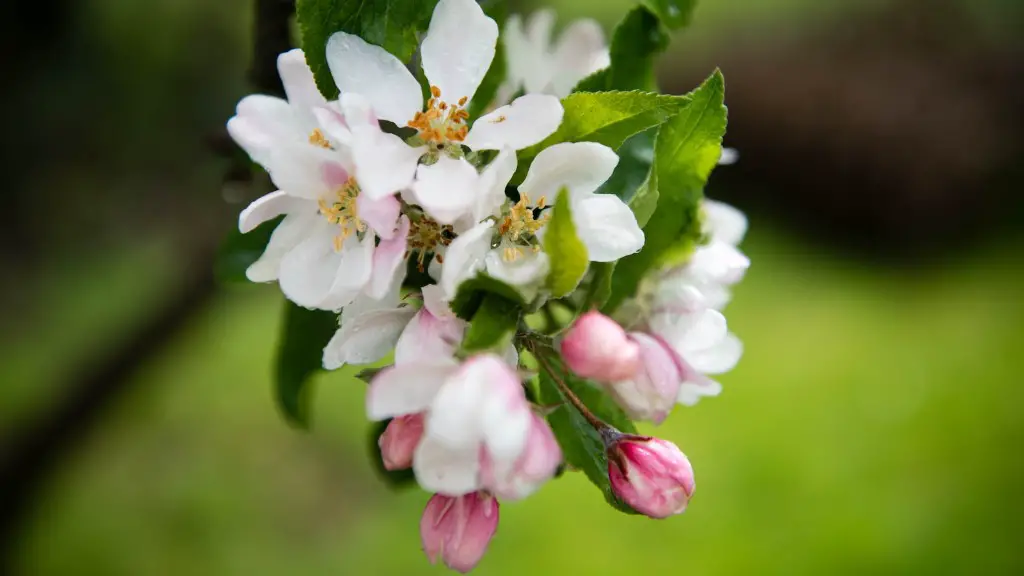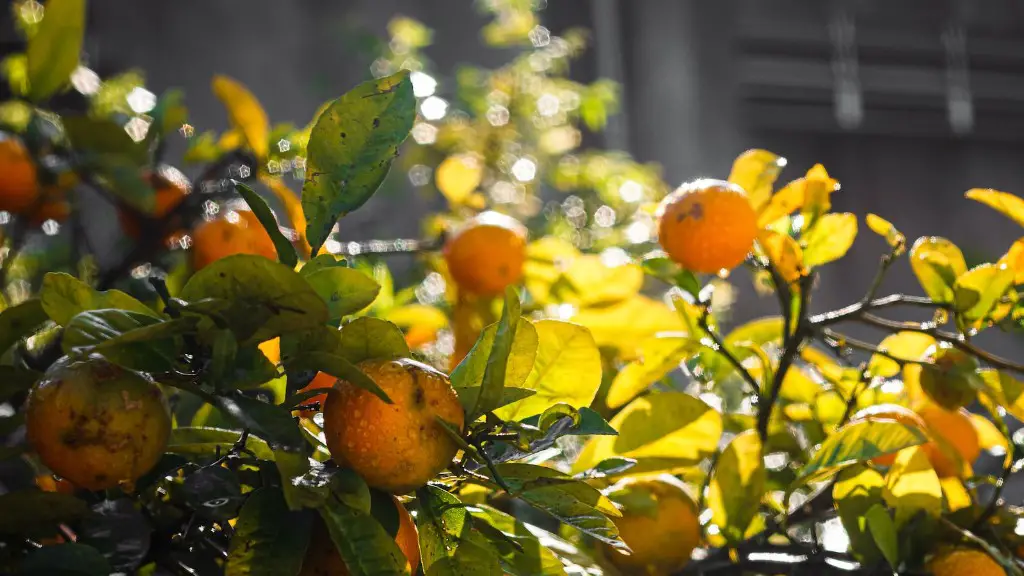An apple tree is a deciduous tree, botanically known as Malus domestica, in the rose family Rosaceae. It is a tree that can reach up to 33 feet in height, though there are dwarf varieties which can only reach 10 to 15 feet in height. Apple trees are hardy in USDA Plant Hardiness Zones 4–9, and even in warmer climates they can tolerate some cold temperatures. Considering its size, it is easy to understand why it has become a popular landscape tree.
The size of an apple tree mainly depends on the variety and what kind of conditions it is growing in. If it is growing in an ideal environment with an ideal amount of moisture and nutrients in the soil, it can reach maximum height according to its variety. Different varieties of apple trees are suited to different climates, locations and soils.
The size of an apple tree can also be affected by two other major factors; pruning and fertilizing. Pruning is important for managing the tree’s size as well as for shaping it. If it is not pruned, the tree can easily get out of control and take up too much space. On the other hand, fertilizing is important to supply the tree with important minerals and nutrients to make sure it has a good supply of essential elements for its growth.
Finally, the tree’s size is determined by the variety and growing conditions, pruning and fertilizing, but also by its age. Apple trees don’t grow overnight, they could take years to reach their maximum height. Generally, an apple tree can take up to three years to reach its full size and can take up to 5 years to reach full maturity.
What Is The Maximum Height A Common Apple Tree Can Reach?
The common types of apple trees can reach up to 10 to 33 feet in height. Dwarf varieties of apple trees can reach up to 10 to 15 feet in height, while standard apples can reach up to 20 to 25 feet in height. If left untended, at full maturity an apple tree can reach up to 33 feet in height.
Apple trees are hardy in USDA Plant Hardiness Zones 4–9, so they can tolerate some cold temperatures. However, the climate in which it is grown is an essential factor in how tall the tree will become. Different varieties of apple trees are better suited to different climates, locations and soils.
What Are The Benefits Of Planting An Apple Tree?
An apple tree is a great addition to any garden or landscape. It is an attractive tree that has attractive foliage and fragrant flowers. Besides, it provides a delicious crop of apples each year. Apple trees can also provide shade and shelter, even in urban areas, where they can also be used to create living fences or windbreaks.
Not only is an apple tree aesthetically pleasing, but it can also be beneficial for the environment. It provides oxygen, cleans the air and helps reduce water runoff and erosion. And, of course, it can also attract wildlife like bees and birds, which help in the pollination process.
Finally, planting an apple tree is relatively inexpensive and low-maintenance. Because apple trees are hardy and can tolerate various climates, they don’t need a lot of care. Pruning and fertilization are important to maintain its optimal growth, but they don’t require a lot of time and effort.
Which Varieties Of Apple Trees Grow Best?
There are many varieties of apple trees, with different sizes, shapes and tastes. Some of the most popular varieties include Granny Smith, Golden Delicious, Honeycrisp, Gala and Braeburn. Every variety has certain characteristics that make it better suited for certain climates, soil and locations.
Granny Smith is a tart, vigorous and strong-growing tree ideal for cold climates. Honeycrisp gives a sweet-tart, juicy and crisp fruit ideal for mild climates. Golden Delicious is also a sweet and juicy apple that is great for fresh eating. Gala apples are also sweet and juicy and are great for baking or pies. And Braeburn apples are tart-sweet and great for snacks and cooking.
When choosing the right variety of apple tree, it is important to consider the climate and location. For colder regions, a more hardy variety is best. For milder climates, any variety can be planted, as long as it works with the soil. In general, apple trees prefer deep, well-drained soils with a pH between 6.0 and 7.5.
How Long Does It Take For An Apple Tree To Grow?
The average time it takes an apple tree to reach maturity and bear fruit is between three to five years. The earlier its planted, the better the chances of getting a harvest sooner. Apple trees should be planted in the early spring, and the planting hole should be deep enough for the roots and wide enough for them to spread out uniformly.
When transplanting an apple tree, it is important to not disturb the root system. The tree should be set as deep as it was in the pot, so that the roots are covered with soil. The soil should also be well-tilled prior to planting, and should be kept moist to ensure proper growth.
After the apple tree has been planted, it should be watered regularly during the first two to three years in order to ensure it is not stressed by the lack of water. Pruning should also be done during the first few years to keep the size under control and shape the tree as desired. Fertilizing can also be done to make sure the tree has proper nutrients to facilitate its growth.
What Are The Best Care Practices For An Apple Tree?
Apple trees require proper care in order to reach full size and maturity. These trees need regular watering during the first two or three years, and should be kept moist at all times. It is also important to fertilize the tree with the right kind of fertilizer to provide the essential nutrients for it to grow. Pruning is also important for managing the size and providing the desired shape.
Apple trees are also prone to pests and diseases, so it is important to inspect the tree regularly to make sure everything is in order. Pest problems can be treated with insecticides, and diseases can be managed with fungicides. Finally, for proper care, mulching around the tree is a great idea to help retain moisture and keep the soil cool.
What Are The Possible Problems Of Growing An Apple Tree?
Apple trees have some potential problems that can slow down or stop the growth of the tree. One type of problem is the lack of sunlight. Apple trees need at least six hours of direct sunlight per day to reach full size and maturity. Another type of problem is excess water, which can cause root rot and impede the growth of the tree.
Another problem is pests and diseases, which can be caused by environmental factors like extreme temperatures or lack of water. If the tree is not inspected regularly, these pests and diseases can easily take hold and damage the tree. Finally, insufficient nutrients in the soil can also cause problems, and it is important to fertilize the tree to ensure it has the correct levels of essential nutrients.
What Are The Common Diseases Affecting Apple Trees?
Apple trees are prone to various diseases that can affect their growth, production and quality. Some of the most common diseases are fire blight, powdery mildew and apple scab. Fire blight is caused by a bacterium that attacks the foliage and blooms of the tree. Powdery mildew is a fungal disease that affects the foliage. And apple scab is a fungal disease that affects the fruit, leaves and twigs of the tree.
These diseases can be managed with fungicides and other treatments, but the best way to prevent them is by maintaining the optimal conditions for the tree. This means providing the correct amount of care, water and fertilizer, and buying good quality plants from a reputable plant nursery.




